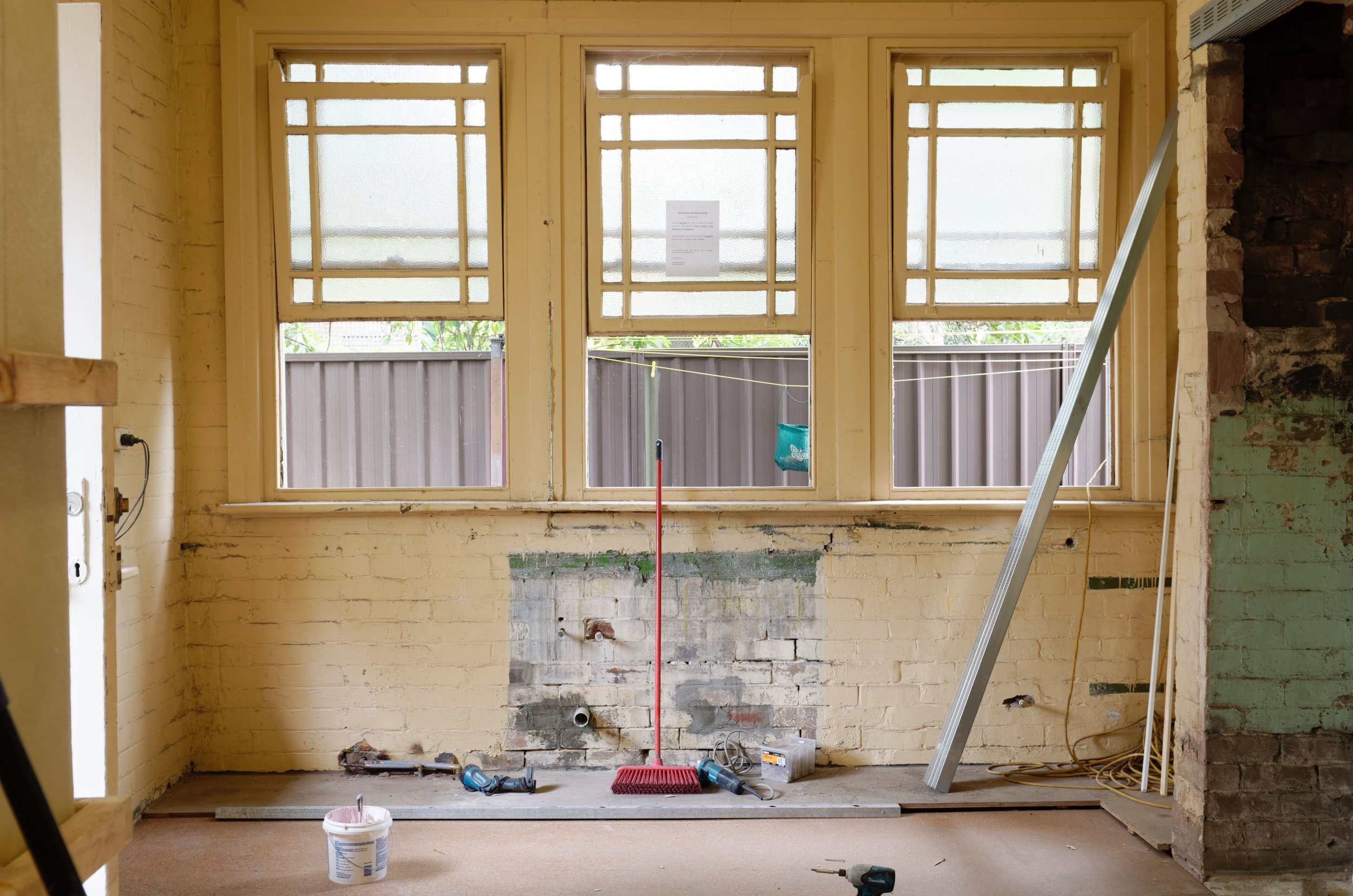Luxury vinyl flooring has changed the way flooring is done. With the ability to mimic hardwood texture at a fraction of the cost, LVP has become one of the most popular flooring options for home renovation projects. Whether you’re replacing ceramic tile, carpet, or hardwood, luxury vinyl has plenty of designs and options.
Removing Popcorn Ceiling & Paint: Everything You Need to Know
Buying a Fixer Upper: Renovation and Remodeling Tips from the Experts
Buying a Fixer Upper: Renovation and Remodeling Tips from the Experts via Redfin
featuring Owner, Colin Shaw
“Needs TLC. Loads of potential.” If you’ve spent time browsing real estate listings, you’ve likely seen one of these “fixer-upper” homes and fantasized about turning it into your perfect abode. With a little elbow grease, it could really shine. Plus, you’ve been looking for a new DIY project.
A fixer-upper home can be a fun project, and a great way to build instant equity, but it also requires a great deal of knowledge and hard work. In the excitement, it’s easy to overestimate your capabilities or overlook the many aspects that go into renovating a fixer-upper. If the home needs more extensive repairs, like electricity or roofing, even the handiest person may find themselves out of their depth. Since information is power, we asked professionals with a background of working with fixer-uppers for their advice on buying, renovating, and remodeling a fixer-upper home.
1. Partner with the pros
Investing in a fixer-upper can be intimidating, particularly given the uncertainties, construction costs, and project timeline. That said, fixer-uppers are a worthwhile investment – building immediate equity – if you’re well-informed and strategic. Two pieces of advice: First, you must know your market. Hire a seasoned, highly rated realtor and have them counsel you on the investment. Is it priced right? How much could the value increase after a remodel? Know the numbers and make a decision that will both protect and benefit your pocketbook. Second, bring a general contractor and/or interior designer with you to evaluate the home. They will give you a sense of the home’s potential as well as the possible costs to transform it into your dream home.
Oren Farkash, CEO
South Land Remodeling
2. Budget for home improvements
If you plan on buying a fixer-upper, you need to know which projects you can take on and which you will need to hire someone to complete. If you are not handy and need to bring in professionals to complete the renovations, the costs can climb quickly and a fixer-upper home may not be the best option for you. Create a budget and stick to it. Prioritize the projects so that you can take care of the areas where you spend most of your time.
If the house is “move-in ready,” you will be in great shape. Sure, the kitchen may be ugly, but is it operable? Don’t blow your budget on one area of the house. Take your time to get everything just the way you like it. It may take a bit longer to complete everything, but in the end, you will have converted the “fixer-upper” into a place you can call home while hopefully adding some equity to the property at the same time.
Colin Shaw, Owner,
Shaw Remodeling
3. Don’t out-remodel your neighbors
You should look for homes that are solidly built and in good neighborhoods. Look for the home that is not necessarily the worst in the neighborhood, but not the best either. You want your home to end up being not the greatest, highest priced one in the neighborhood, but close to it. You also need a good realtor, one who is willing to look hard for what you need.
When you get ready to remodel the home, make sure that you do not ‘out remodel’ your neighbors. Meaning, you do not want to spend so much that when you decide to list the home for sale, you are in upside down. There is a fine line to balance when it comes to pricing your home.
Debbie Speck, Vice President
Spektacular Home Remodeling
4. Prioritize natural light
Focus on the space available and the lighting. Having a lot of natural light can make a big difference in the end result and atmosphere in the home. It can be expensive to knock down walls and add more windows but updating the color pallet, flooring, and accent walls are much more affordable and DIY-able. Look for places in the home where simple updates can make a big splash such as adding an accent wall for texture.
It can also be helpful to have a theme in mind before you buy the home. If you are wanting to create a farmhouse look and feel, try to find an open concept house with the right bones for the style. You want to make sure that your plan for the interior style will match the exterior of the home. For example, a victorian style house might feel odd and disjointed with a modern minimalist interior.
Alison Milbury
Old Mill Brick
5. Water damage isn’t always a deal-breaker
Most homes will suffer water damage at some point. Provided it is addressed promptly and properly, there is little concern about the integrity of the home. However, when the damage is not taken care of, or in many cases, not known until it’s too late, the required work can be extensive. Certain parts of the home are more likely to be impacted by water and/or mold. The areas that we typically find damages are the kitchen and the bathrooms, which have tale-tale signs if you know what to look for.
Most home inspectors will point out differences is appearances, but often the person performing the inspection does not go into much more detail. Often times what an inspection paints as horrific conditions, may have a simple fix and can be handled promptly by a certified restoration company in order to maintain your home-buying schedule. At this point in the home buying process, an experienced restoration professional’s evaluation can potentially save you money and avert headaches that are often associated with long term water damage.
Kris Lloyd
Complete Restoration Services
6. Vet your contractors through the BBB
Don’t feel uncomfortable telling professionals how much you have allowed for your budget. They will better guide you to the right products in your price range. Hire professionals with impeccable credentials and research them thoroughly. Check the Better Business Bureau (BBB), National Association of Home Builders (NAHB), and home builders’ association (HBA) in your area. You will come across a lot of people who really do not know what they are doing and you could regret hiring them later.
Have a good idea of what you really like aesthetically. Take time to look at photos of other kitchens to get ideas and inspirations that appeal to you. Eventually, you will see a pattern of what you like and you can incorporate that concept into your space. The remodeling “reality shows” are great inspirations for “before” and “after” but they do not show what really goes on behind the scenes. Do not rush into making decisions just to appease someone else. You want to feel good about your choices!
Nancy McRobb, Kitchen & Bath Designer
The Kitchen Specialist
7. Deck safety is a priority
With a deck “fixer-upper”, safety is your main priority. Sometimes you only need to replace some deck boards; however, many times a deck that has not been properly built or maintained needs a complete overhaul. First, inspect the deck to make sure it has all the required safety hardware:
The ledger board needs to be attached to the home with ½ inch galvanized lag screws and bolts
Metal galvanized fasteners need to be used on all joists and posts
Deck railings need to be securely fastened with hardware to be able to withstand 200 pounds of lateral force
If any of this hardware is missing, you can sometimes retroactively add the correct metal fasteners to make the deck more secure. However, sometimes a deck is not built to code and beyond repair:
Deck joists need to spaced according to building code
Deck railings need to be more than 36 inches high with less than a 4-inch gap between balusters
Deck posts should be secured by post anchors to concrete footings that aren’t cracked or sinking
The deck frame should not have any signs of insect damage or wood rot (insect damage and wood rot could be a problem if you can push a screwdriver ¼ to ½ inches into the wood)
If the deck frame is not up to code or beyond simple repair, then you need to factor deck demolition and replacement into the cost of buying the fixer-upper.
Trent Irwin, Owner
TnT Builders Inc.
8. Roof issues can be expensive to fix
When buying a fixer-upper, the following types of roofs should be avoided if possible:
Light wright tile roofs: Although these roofs are beautiful, they are expensive to install as well as maintain. If you buy a fixer-upper home with this roof, you can expect to pay a lot in repairs down the road.
Low sloped or flat roof: These roofs are extremely expensive to repair. Assuming the previous owner had this roof for years, since these roofs have a shorter lifespan, you can expect to pay a lot to replace the flat roof.
Roofs that have not been maintained: Even though you’re looking for a fixer-upper, broken tiles, slipped tiles, missing shingles, mold, or leaves and debris across the roof are signs that extensive restorations may be needed.
Houses that have multiple trees over the roof: Though not as important as the other signs, a house with many trees over it can cause major damage to the roof. As weather changes, the tree debris clogs roof drainage, which can lead to mold, leaks, and costly repairs.













